After a delightful short summer break, Seth and Tsh are back to peel back the layer of what’s there to see what’s really there. …In this episode to kick off the next season, they talk about many vs few: why does it matter how many people we follow online, friends we stay connected with, names we know, or celebrities we keep up with? Turns out there’s some anthropological science to the overwhelm we feel when we keep track of thousands of people online yet don’t know our neighbor’s name across the street. Perhaps this isn’t how we’re designed to live? We bet there’s a better way.
Seth: Newsletter | Twitter | Instagram | Website
Tsh: Newsletter | Twitter | Instagram | Website
Pick up the next round of drinks — help keep the show going!
Subscribe to the show’s Substack
Find all the episodes
Tsh’s Rule of Life workshop
Try Hallow free for 30 days!
Dunbar’s Number: Why My Theory That Humans Can Only Maintain 150 Friendships Has Withstood 30 Years of Scrutiny, by Robin Dunbar
1,000 True Fans, by Kevin Kelly
Brideshead Revisited, by Evelyn Waugh
Start With Why, by Simon Sinek
The Sparrow, by Mary Doria Russell
Scroll down for the transcript
Tsh: This is A Drink With a Friend, I’m Tsh Oxenreider.
Seth: And I’m Seth Haines.
Tsh: Seth, what are you drinking on this first chat back after several weeks away?
Seth: As you know, as we have talked about, I have become one of “those guys”. I work out a lot these days and I am trying to have some very specific goals and as a result of those goals I have met with a trainer/coach and he has given me specific nutritional goals and of those nutritional goals is to eat, wait for it, 210 grams of protein a day.
Tsh: That’s a lot.
Seth: Do you know how much that is? Have you ever tried to eat 210 grams of protein in a day?
Tsh: It’s probably more than I’ve ever eaten in a day, I don’t know.
Seth: I think you should try it one day just for grins. I think, in fact, everyone here should try it for one day just to understand the sheer torture that I am putting myself through. As a result of that, I have to find creative ways to supplement protein and one of those creative ways is to drink protein powder so I am drinking Sonic ice, which comes from an office machine it’s not actually from Sonic, put it in a blender, a shaker bottle, pour some water in there and two scoops of Orgain chocolate plant-based protein powder—not because I’m super-vegan, just because that’s what Amber uses and that’s what I use. When you’re eating 210 grams of protein, you got to eat steak and red meat, sorry vegans. That’s what I’m drinking today. I am drinking a chocolate protein shake and it tastes about as good as you’d imagine.
Tsh: That was going to be my next question. Does it actually taste good or does it taste healthy good?
Seth: It tastes healthy good. That’s a good way to put it. I think of all of the protein powders, this is probably my favorite, the Orgain. This is not sponsored by Orgain so I can tell you what I actually think about it. It doesn’t have that chalky feel to it. It blends really well and it’s actually pretty good with just water and ice. I do like it. If you’re giving me the option of that or chocolate milk, I’m choosing chocolate milk.
Tsh: Right.
Seth: That’s what I’m drinking today, what are you drinking?
Tsh: Well, I am back from almost a month away from Texas and I am celebrating that by having opened up an HEB brand sparkling water.
Seth: Going back to the well.
Tsh: Back to the well. It was funny, about a week and a half into our trip I was heading out to the grocery store, this is up in Oregon, and Finn, my youngest asked me, hey, would you mind if when you get the sparkling water can you get the HEB brand? I said, buddy, HEB is a Texas-specific place and the look on his face was hilarious. He even said after that, gosh, I feel badly for the people up here. He’s a true Texan by being a grocery store snob. We’re back to the well. I’m drinking passion fruit fizzy water from HEB, or as our mutual friend, Haley Stewart’s youngest daughter, Hilde, calls it, sparky water which is what we have adopted and now call it here in our house. Sparky water.
Seth: When you think about it, Hilde, I’m assuming named after Saint Hildegard…
Tsh: She is, yep.
Seth: Passion fruit, which Saint Hildegard was full of passion and calling it sparky water, I mean, she saw the sparks of life. All these things converge in little Hilde’s story, I like that a lot.
Tsh: I fully planned it.
Seth: Do you know what you should tell your kids that if they want to be fully Texan, then they have to drink HEB sparky water in an oversized truck while wearing a ten-gallon hat and chewing tobacco.
Tsh: [laugh] Sadly, that’s more true than I care to admit. It takes for absolute ever to drive from Texas to Oregon and frustratingly an entire day of that is just getting out of Texas. Because we live in central Texas and it takes us, I believe, nine hours to get out of Texas via the panhandle. On this last day, as we were coming back in, it felt so very Texas because of all the big trucks. I hate that stereotype but it is really true. Furthermore, we have noticed that red trucks, they are not safe drivers or they are crazy on the roads. Listener who drives a red truck, be careful out there.
Seth: Slow down, red truck. Slow down, be calm.
Tsh: Come on.
Seth: We used to have, you know I’m an attorney, there was this old judge who told this story about the old hound dogs in Arkansas. He was very fond of telling this story when there were New York attorneys down and he would say, there was this old coon dog named Old Red and whenever we’d open all the gates to let all the dogs go eat, they’d all go crazy after the dog bowl and they’d fight each other and growl over it. Old Red, though, he would go under the shade tree and he would just sit and wait for all the other dogs to be finished. Then he’d go over to the bowl and there’s plenty left and Old Red would eat his fill. That’s kind of what I want to say to the red truck driver. Go sit under the shade tree, just for a little bit, Old Red.
Tsh: [laugh] I love it.
Seth: Just chill out.
Tsh: That’s good. That’s really good. As I mentioned, I was gone for almost a month up in the Northwest. You guys were gone, too, albeit not as long. You guys went to the Gulf. How was your trip?
Seth: It was so good. To be really honest, beach, meh. It’s not my thing. I do like the idea of sitting on a beach and reading but I’m also very pale-skinned. In fact, when you do my ancestry.com DNA test, which my dear friend, Tasha Morrison of Be the Bridge told me I should do. She said we should all know our ethnic profiles. Even if you’re a whitey-white guy like I am. At her behest I did and I found out that my entire family comes from probably about 30 square kilometers in the UK. I have zero, that’s not true, I have some Scandanavian ancestry. In fact, I’m so white that I probably should change my middle name to white privilege. The idea of sitting on a beach where the UV rays can penetrate SPF 1000 and scorch me to a lobster is not appealing. This time we didn’t do a whole lot of beach sitting which was really great. I did a lot of fishing with my kids in the bay which was a whole lot of fun. We read a lot, we hung out a lot, but we did most of our beaching in the morning and in the late evenings. Aside from that we just hung out inside, went fishing under trees, and it was really nice. It was the first time that I thought, oh, I kind of like this.
Tsh: I have a dumb question. Whenever you go fishing on vacation, do you eat the fish?
Seth: Depends on what you catch but one hundred thousand million percent.
Tsh: Okay.
Seth: We found this little spot on the bay where the speckled trout run in. They come in from the ocean and they cruise this bay looking for food. There are really two times a day that you can get into them all day long. It’s just on the side of the road. Titus, who just turned ten, and Isaac and I can sit there and just hang out and just catch fish for hours. They are massive speckled trout. The last day we were there we had fish tacos with trout that we caught, speckled trout that we caught out of the bay. Yes, we do keep our fish, we do eat our fish. Again, see my previous comment regarding protein.
Tsh: Right, and it comes full circle. That’s cool. I wasn’t sure how one handled that while one was not at home with a freezer of sorts.
Seth: One gets creative, Tsh. Very, very creative. It was a good trip, but I’m glad to be back and I’m glad to be back here with you.
Tsh: Yeah, I am, too. There was something special about a trip where on our way back we felt like it was time to come back. I know you know what I mean because we’ve all had that experience of when you go somewhere and you feel like, I barely scratched the surface and I almost felt like it was just starting to come down from the stress of life when I had to turn around and come home. It wasn’t a trip like that. I think it was long enough to feel restful but not so long that we got restless. It was really good to come back and get back to a routine. It’s not so much that I’m ready for school to start. As a teacher, it’s only a few weeks away for me and it’s inevitable, it’s okay. I can’t complain. It’s enough to where it felt really good to wake up early and get to working on some planning and some writing and some stuff. Even housecleaning. That to me is a sign of a really good trip. We had a great time, as well. It was weird to be up in the northwest when it was so hot. They are having a freakishly warm summer as people probably heard from the national news, maybe even the international news, at the start of the summer. While it’s not as blistering hot as it was then, they had that weird dome, some kind of heat dome where Portland was 116 degrees. It didn’t stay like that but it was just hotter than normal. It was strange as a Texan to leave here which we are having a cooler than normal summer, it’s not cool, just cooler, to go up there and for it to only be a few degrees cooler. The A/C is not everywhere like it is here which is usually an asset but when it was so hot. We had some pretty warm nights of sleeping. We camped for a good chunk of it because that’s what we do, we Oxenreiders. It got a little chilly just a few nights as opposed to every night, which is what we were used to. That’s okay, it was still a great trip. Grateful.
Seth: I’m glad to hear that but I am sorry for all the listeners in the northwest, Pacific Northwest about your heat. It’s a bad deal. You move up there for the weather and then to get that, it’s like nature giving you a middle finger.
Tsh: It is. I think it’s even harder when you’re just not used to like the way we Texans dealt with the crazy winter earlier this year. A lot of them, 95 degrees for us here just feels like a regular Tuesday but there it’s a big deal. When you’re not used to it, my sister-in-law actually said she got dizzy just gardening and couldn’t figure out what was going on and she had to come back in the house and lay on the floor. She realized, oh, it’s hot. You know your environment.
Seth: I know a lot of times whenever we go on vacation, I don’t know if it’s this way for you, but when I’m on vacation, I tend to write more poetry. I tend to read more things. I tend to think more deeply about things because I have time. I carve out the time to sit and think and strategize and plot and create. Do you find that is true in your life? What were you thinking about on this trip?
Tsh: Yes, it’s for sure a true thing in my life. Two years ago, in 2019, I took a full-on sabbatical for the first time. I’ve talked about it before so I won’t rehash. I actually completely turned off my phone and my laptop and I didn’t open them for a month. This time, I didn’t exactly do that. I didn’t make any promises that I would never post on social media or read anything, but I also gave myself full permission to not care one iota about it. It was a nice mix of I could check it if I wanted to but no big deal if I went days. I did. I only posted once at the beginning and then I realized I don’t really care about keeping people up to date with my vacation because they don’t need to know. It doesn’t make my trip more enjoyable to post. I say all that to answer your question in that it’s remarkable to me whenever you take away that part of the pie that you consume in a day you have a bigger slice for other things such as long-form. Yes, I did much more deeper reading, long-form reading. I, not only, finally read some long articles that I had been saving for someday. I read a few books and it was great. I’m going to talk about the book I read later when we get into the stuff that’s making our life better because I do want to unpack it. I know you love this book.
Seth: Can we just cut to that? I’m just kidding. Let’s not, let’s keep talking.
Tsh: It was really nice being able to bookend my days with long-form thinking. It’s a subtle difference of waking up for my day versus to my day, I think maybe that is the way I can put that. I woke up still pretty early because I’m in my forties and I do that, for reading for an hour if I wanted to. And ending my day like that. It was lovely being able to read with the little lantern in our pop-up trailer while the kids were sleeping next to me and just read as late as I wanted because it’s okay. I don’t have work the next day. It’s one of my favorite things about travel, is being able to think more deeply and leisurely and also, probably with that, converse more deeply and leisurely. Like I mentioned, it’s a really long drive and we get to having some good conversations in that car on the way and back.
Something I was actually thinking about on this trip and I’ve thought about before, is this concept that is not brand new but is something perhaps we can unpack a little bit here because I think it’s related to the things we like to talk about on A Drink With a Friend, which is the sacramentality of all things, that’s the concept of Dunbar’s Number. Have you heard of that before?
Seth: Only in your text message to me about Dunbar’s Number. But it sounds really intriguing to me. I’m not a numbers guy. It was my worst section of the ACT, had to do with numbers.
Tsh: Me, too. I will not get into the science of it, because I don’t really care, honestly. I don’t think our listeners would care that much. I first heard about this concept, yet again, from Hilde’s mother, aka Haley Stewart, a friend of the show. She told me a few years ago about this concept which is basically from an anthropologist named Robin Dunbar in the 1990s. He hypothesized, basically, that humans can have about a max of 150 people in their social sphere. He did this from studying primates. I can link to the article if people really want to get into it. It’s actually from him, Dr. Dunbar, but I’m not going to get into it. What he’s basically saying is that humans seem to have this natural innate, in our DNA, natural limit to the number of meaningful relationships we can have. On top of that, these relationships are layered. Most people thrive, actually, with only about five people in their closest layer. Concentric circles. Then the next layer holds about ten people, a little bit lower than our closest relationships but still fairly close so perhaps maybe extended family or really close friends. After that, the layers go to fifteen, then fifty, then finally one hundred people for a total of 150 people. He is saying this in conjunction with the idea that not only that primates seem to function this way as well but so do most of human civilization history. We tend to, up until the recent modern era, we’ve all lived in really small villages or if we lived in cities, we still had a really small social sphere. We didn’t know that many people. I’ve been thinking about that as we traveled because after a year plus of COVID, I’m an introvert but I was still itching to see people and yet, it didn’t take me long to get my fill where I was like, I don’t want to see people as much as I thought I did. The reason is because I already saw people. I don’t know. Have you ever had this experience before where you just feel like there’s this innate hardwired max that you have in your life?
Seth: Yes, in fact, I think about this more in terms of business terms because I feel like I do a pretty good job. I did not early on and I did not in my thirties do a good job of limiting that sphere. As I’ve gotten older and as I’ve come into touch more and more with innate introversion, I think I do a pretty good job of limiting my sphere. We’ve always, probably for the last five or six years, we’re pretty close with the same three other couples. We keep the same social circle for the most part even the extended social circle, the people that we love but we don’t get to see as much. We’re not looking to expand that, as terrible as that sounds. I think we have some of the same core group of friends that we’ve had for the last five to ten years. Where I find it to be a real challenge for me is in the world of business where you’re always expected to be growing, expanding, scaling, all those words that we’re so fond of using or as you Austinites say and the Silicon Valley people say, crushing it. Which generally means amassing contacts and influences and all those things but it can be really difficult because you can spread yourself so thin with your contacts, with your commitments, that you really can’t do what you’re supposed to do well and deeply. I feel that stress and pressure almost on a daily basis.
Tsh: I think in our work if we consider yours and my local work, you as an attorney, me as a teacher, we already have people that we absolutely have to stay connected with. Be it our co-workers, our bosses, in my case, my students, your clients. These are given, they have to be part of our 150 people. You might hear that number and think, oh, that’s plenty, but really it starts adding up when you start considering closest friends family, extended family, neighbors. Interactions with people that you generally care about, the barista at the coffee shop, your mail carrier, cashiers, and store owners. Not saying that you have to know them deeply, they can be in your outer circle but that still part of your 150? Things like that just makes me wonder what happens when we then prioritize relationships found only through the screen. I don’t mean you can’t make friends through the screen. I have. I think you and Amber count as some of them. Where you meet people on the internet first but I’m talking about those people that there’s really no way that you will ever meet them and they will remain a peripheral avatar even if you do like them as a person. Whenever we dedicate too much of our energy, our relational energy to them, someone in that 150 circle has to fall away, and perhaps it’s not someone you want to.
Seth: Or at least the quality of those relationships suffer. You know what this makes me think of? The little town that our merry band of compatriots stayed in Italy. Do you remember that little village?
Tsh: Castelmuzio?
Seth: Yeah. How many people do you think lived there?
Tsh: Oh my gosh. It was tiny. It was so tiny. I’m the worst at guessing. But it was really, really small. You couldn’t fit cars in the town, remember? They had a parking lot for the town.
Seth: Right. And the streets were pretty much for little boys on their bikes.
Tsh: Right.
Seth: What was that maybe 150 people? I just think about how connected that community was and how they kept sending us, oh, you got to go eat at this person’s restaurant, which coincidentally was the only restaurant or you have to go learn to paint from this person who coincidentally was the only painter in the area. It was such a quaint, sure, but there was something that was really almost manageable about it. About thinking through, if this were my village, this would be incredible. You’d know everybody. You’d know when somebody needs help, you’d know where to get help, you’d know where to go. It would be interesting to know if that’s the way people organized themselves naturally. The churches there in Castelmuzio, they probably held about 150 people despite the ornate nature of them, how beautiful. Those little villages that we went to, they seemed to exist for those smaller pockets of people. Of course, there are bigger towns just like anywhere but it makes me wonder if that’s an organizing principle that humans innately live into. Have you looked at that? Is that part of Dunbar’s Number?
Tsh: I think that’s what he’s saying, is that anthropologically speaking and historically speaking, this is how we have organized ourselves for most of human history. Villages and small little enclaves as opposed to how we do it now. I would even argue that, I remember talking years ago with Kristen Kill who used to live in Manhattan and she mentioned that one of the things she loves about living in a big city like New York is that it actually has a small-town essence because most of what you do on a daily basis is just within a few block radius and it’s all there. Like your bodega on the corner is a few feet away from your apartment and she said the bodega owner will call me to let me know my son is about to buy ten Kit Kats, is that really what he’s supposed to be doing because he knows her. It’s got this small-town feel because it’s a neighborhood, it’s a micro-town within this huge city. I wonder if in the 21st century in North America where most of us live somewhere in between a tiny town and a mega-city if that’s why there’s just a little bit of this malaise about our day-to-day life in our immediate sphere where we live. We have too many people, we have more than 150 people and yet it’s not the 150 we actually want which is our neighbors. A lot of people that live in the suburbs possibly don’t even know who they live around. To me, it’s one of the huge appeals to living where we live which is in a really walkable, small historic town because I want to know the people I rub shoulders with. I genuinely want to know who they are even if they’re not like my chosen “favorite” people, I want to know who they are. There is something deeply rewarding. It almost feels like in my soul that I can’t describe that feels right and good when it’s like that kind of like the people in Italy.
Seth: I wonder, too, as I think about this principle and expand it out into the “I wonder ifs” and “there’s no way we can answer these questions on the show” questions. I wonder if there’s a natural inclination towards that 150 even on social media? In other words, when I think about my Twitter usage or my Instagram usage, I bet I don’t interact other than hey, thanks. I wonder if I interact with 150 people or less across all platforms. I’m not saying 150 people on Twitter, 150 people on Instagram. I wonder if I were to go and look at my actual interactions, people that I chat with, DM from time to time, like their stuff, they like my stuff. I wonder if that’s 150 because even as we’re talking about this I’m thinking even in the virtual world I am naturally inclined to limit my interactions and I can’t really tell you why, it’s a terrible brand building strategy but it feels natural to say I don’t really know you, thanks for liking my stuff. The quality of the interaction is not the same. There have been great friends that I’ve made over the years vis a vie social media for whatever reason but it does seem like it caps out at that knowable 150ish people. Is that weird?
Tsh: It’s not weird and I think you hit on exactly why it’s not weird because you said it’s terrible for brand building. I think the reason it feels weird is because social media is inherently structured to not reflect Dunbar’s Number. It sends us this message that we’re supposed to be as connected as possible in order to be thriving, healthy humans in 2021, and our evolution does not agree with that. We reject it in our bones. It is terrible for brand building because we’re not brands, we’re people. Right? Maybe a company who has several people on staff that can operate the Instagram account can manage it because they are using a different part of their brain, it’s work and they’re not feeling this is part of my 150, this is just a task to check off on my work list. When it comes to our own human interaction, I think that’s why. You told me a while ago about the mute feature on Instagram where you can still follow people but if they’re just using the tool in a way that’s different than you want, you can mute them and they won’t show up in your feed but it’s not anything against them, it’s just not for you. To me, that helps and the more I do that the more Instagram shows me the same twenty people I even want to keep up with and it’s so much better. I think that makes a lot of sense.
[AD BREAK]
Seth: It makes me think because we’re talking about this and we’re talking about how we’ve been convinced that personal brand building, 1) is a necessity—which I disagree with, but 2) that it can be done through social media. I’m reminded of a podcast that I had the privilege to join. It’s a friend of mine, his name is Clay Newcomb, he runs a hunting, it’s not really a hunting podcast. It’s like a podcast about storytelling about the outdoor lifestyle. It’s a brilliant podcast. It’s called Bear Grease. He just released an episode on Daniel Boone. I knew very little about Daniel Boone so I was not on the podcast to talk about Daniel Boone but I was on the podcast to talk about brand building, which is one of the things that I do. We were talking through archetypal brand building and building a brand around a character. He is a literature professor, you’d probably geek out on this stuff, too. They’re twelve great archetypes and nine great stories and Daniel Boone existed within a particular story at a particular time as a particular archetype and that’s why we all know who he is. Even as he was talking about Daniel Boon as a “brand”, it was very clear that his sphere of influence was very, very limited. Extremely limited. He was very Quaker influenced so he spent a lot of time in the wilderness. He spent a lot of time with Native Americans both in good and bad context, certainly. His sphere of influence was very limited and yet because of the depth of his life and the quality of his skill, even though his sphere of influence would have been 150 or less, certainly, his myth, his brand, has exploded because he was true. He lived into who he was, authentically and people knew that and loved that. I wonder, too, if there’s not a way to say maybe the more important thing long term is to live authentically with deep quality with deep skill in a very sacramental way with 150 people and maybe at the end of the day, that’s actually better brand building for lack of a better phase than gathering 10,000 followers on Twitter.
Tsh: I completely agree. To me, it sounds exactly like that idea that ran around the Internet around 2009, the 1,000 true fans. Have you heard of that one?
Seth: Oh, yes.
Tsh: It feels like that where you don’t necessarily need all the followers you just need the right ones who care about your work and will support whatever you do. This isn’t about that so I don’t want to get into that too much but that’s one of the reasons I love Substack so much as opposed to Twitter or Instagram, really, because I can connect with people I genuinely want to connect with because they genuinely want to connect with me and we can talk about the things we want to talk about. I think it’s more than just good business. I think it’s good business because it’s actually how we’re made. It’s in our bones. I think there’s something spot on about that and I think you’ve told me about that podcast. I’m going to put it in the show notes because I like a good storytelling podcast.
Seth: I tell you what, he does it well. And he’s not out there trying to get a million fans, just a thousand true ones. I think he’s doing a pretty good job.
Tsh: Very cool. My takeaway as we wrap this up for the concept of Dunbar’s Number post-vacation and I’m curious if any listeners resonate with this. For me, personally, it’s just a reminder to connect in person with my friends or with a friend around weekly. It doesn’t need to be a major dinner party. It’s just grabbing coffee with a friend, roughly once a week. I know COVID numbers are bouncing all over the place so we have to be smart and that’s annoying. An hour with a friend over a drink is worth it because it just keeps things in perspective. Prioritize my absolute inner circle, which if he really means five to six people, that means my family. There’s no other way to do it. That’s where the numbers are. Do what I can to make sure we still get the family time we need as frequently as possible. For me, it also means, Kyle and I have been convicted about the idea of keeping our parish as local as possible. Where we go to mass on the weekend needs to be in our hood if we can help it. To me, that’s just a whole other thing to unpack that we could talk about someday. The last thing for me is there’s real truth to taking regular screen breaks. Even though that might not seem connected to Dunbar’s Number, I think it is because it just keeps things in the right place. It keeps tech where it should be and not the primary way I tap into those 150 people. It’s a peripheral thing. For me, that might look like one day off a week of not touching the screen, or whatever it is. I don’t want to be dogmatic about it but it means regular screen breaks.
Seth: I love that. As I think about it, I’m leaving the drink with my friend, Tsh, today thinking through what is the purpose of individual brand building and is it even really possible in the modern context, and should it be a thing that we’re pursuing or is it actually doing something negatively to us anthropologically? Is it jacking us up somehow to think that I’m important enough to build ten thousand followers on any social media platform when the truth is I can only relate to 150, total? I think it’s a great question. A great thing to keep thinking through as we keep having drinks with friends.
Tsh: Yeah. I think this is a topic to continually unpack because it’s not going away. Our culture is still going to be telling us to grow more and more and more and our bones are going to be telling us, wait, am I supposed to?
Seth: That’s right. Tsh, tell me this then, what is one thing that you are reading, listening to, watching that is bringing more truth, beauty or goodness to your life, and don’t try to get away from telling us about the book that you read on vacation because now my curiosity is peaked.
Tsh: It is not a brand new book. It’s a book that’s been on my TBR list forever and you just read it, too. I finally read Brideshead Revisited, by Evelyn Waugh.
Seth: Oh, oh!
Tsh: Oh my goodness! What a fantastic book to read on vacation and what a wild ride that was! I was not expecting what it ended up being. And it was so good!
Seth: Yes!
Tsh: And the ending made my head spin and it wouldn’t let me go for days and days. I just loved it. It was so well done and so unexpected. He was just a master with words. I loved entire sentences in that book.
Seth: I actually have chills right now just talking about it. Did you geek out as much as I did about the personification of the storm on the ship? I go back and read those passages still.
Tsh: Yeah. That section, I did not see that coming. It was so well done. It was so good. I love it when writers create characters that I’m rooting for even if they’re somewhat terrible. I say that because we all want flawed heroes. That’s in our soul and that’s why we love books that made the protagonist have a certain depth and dimension and why the ones that make them perfect don’t really last. Sebastian and Charles and Julia, were all terrible in some ways and also delightfully relatable in many other ways. I just loved it. So good.
Seth: That’s the thing about that book that I think is so brilliant. You saying that makes me think of it, there’s not a single character that I can remember in that book right now that I did not root for.
Tsh: Yeah.
Seth: Not a single one. That’s really rare in a book.
Tsh: Yeah, that’s a great way to put it. I think it’s an interesting juxtaposition to a book like The Great Gatsby because, in that book, I root for no one. They’re all, I want them all to just go away and go to therapy. In this book, there was hope even in the midst, I mean it was the same time period, too. Even in the midst of their drunken stupors, even that guy that Sebastian lived with in Morocco that was…
Seth: Yeah, totally.
Tsh: I was rooting even for him, come on dude, you got this.
Seth: Pull it out man, you can do it.
Tsh: Yeah, that’s a great way to put it. Highly recommended. Everyone needs to read that book.
Seth: Agreed. I totally agree.
Tsh: Alright, what are you reading, watching, or listening to that’s adding more beauty, goodness, or truth to your life?
Seth: I started this over my own vacation and I’ve gotten a little bit hijacked with some work reading. Which my work reading, I might as well tell you, it’s a book that I read a long time ago and I cached it out again, Start With Why, by Simon Sinek. It’s actually a really good book for any of you guys who are out there looking for a business book if you haven’t read it. I think there’s some sacramental truth in there but we’ll leave that for another episode. I started a novel and I’m about half-way through called The Sparrow, by Mary Doria Russell. It’s a story about a Jesuit who visits an alien race and comes back and is very discombobulated. It’s a story of doubt. It’s less vonagent (sp?) than I would want and a little bit more beach read-y than I would prefer but yet it’s really intriguing and interesting. A friend gave it to me and I actually really love it. I think it’s wrestling with some really good issues and tensions around the idea of doubt and power, particularly the abusive power. Sometimes it doesn’t paint church in a particularly great light but still, there are those characters that come from within the power structure that fully embody the sacramental beauty of what it means to have sacrificial love. That’s really, really good to see in the book. I’m really enjoying it so far. The truth is with all the work reading that I have to do over the next month, it’s probably going to take me two months to finish but we’ll see.
Tsh: I get it. As the school year starts I’m going to be swamped with other people’s choices of reading material for me including my own self-inflicted as a teacher. Is this a new book, The Sparrow?
Seth: No, I can’t remember when it came out but it’s an older book. Oh, I’m looking at it now, 1996. The year I graduated from high school.
Tsh: Got it. Not like super old but definitely not new.
Seth: The millennial listener here would say come on, that’s super old.
Tsh: I know, I forget that. In my mind, if I can place where I was in a year that you name then it doesn’t feel old but I know that’s dumb.
Seth: But you know that there are some listeners here who, I can place where I was, I was a thought in my parents’ mind.
Tsh: Yeah. I was actually just having this conversation with my middle kid who has no concept of time. He’s thirteen and he will still ask about some movie that’s black and white, were you alive when this came out? Yeah, you don’t understand.
Seth: Rude.
Tsh: I know, it’s okay. I did the same thing.
Seth: We all do.
Tsh: It was good to get back to this and as we wrap this up, I am excited to get the fall season started. I’m grateful to have people listening in and grateful for this time. You can find this episode, as well as all episodes, at adrinkwithafriend.com. If you like this show and what we’re doing here, you can help keep it going by picking up the next round of drinks! This show is free for you to listen to but it’s not free for us to make, so at the cost of a cup of coffee or a pint, you can play a big part. Find the link to do this in the show notes of this episode, or at adrinkwithafriend.com, and thanks so much in advance for your partnership. Thank you very much in advance for your partnership. Also, a reminder to check out Hallow free for 30 days at hallow.com/drinks. They’re my go-to resource for excellent meditation and prayer, and I think you’ll love it to. Again, that’s hallow.com/drinks, or find the link in the show notes. You can find me and how to connect with me, especially via my newsletter, at tshoxenreider.com. Seth, where can people find you?
Seth: They can find me at sethhaines.com, I highly suggest going to sethhaines.substack.com and while you’re at it you might as well follow me on Instagram @sethhaines. Just do all things.
Tsh: Do all the things. Music for the show is by Kevin MacLeod, editing is by Kyle Oxenreider, and Caroline TeSelle is our transcriber and assistant extraordinaire. I’m Tsh Oxenreider with Seth Haines, and we’ll be back here with you soon. Thanks for listening.



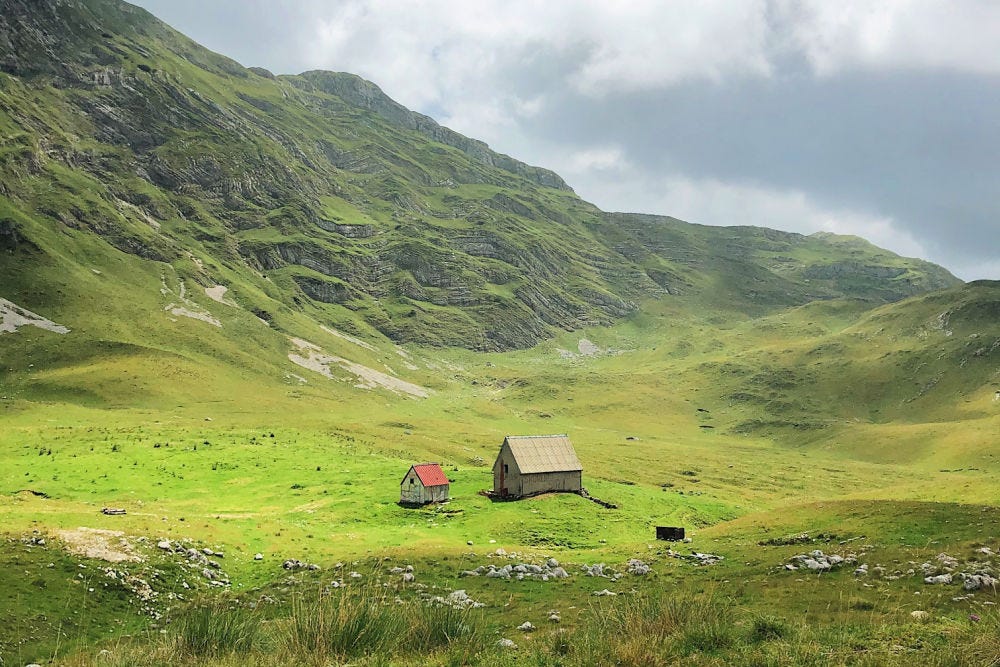





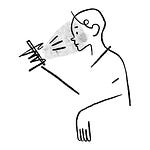
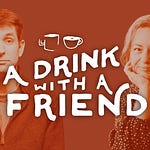
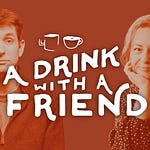
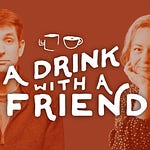
Dunbar's Number